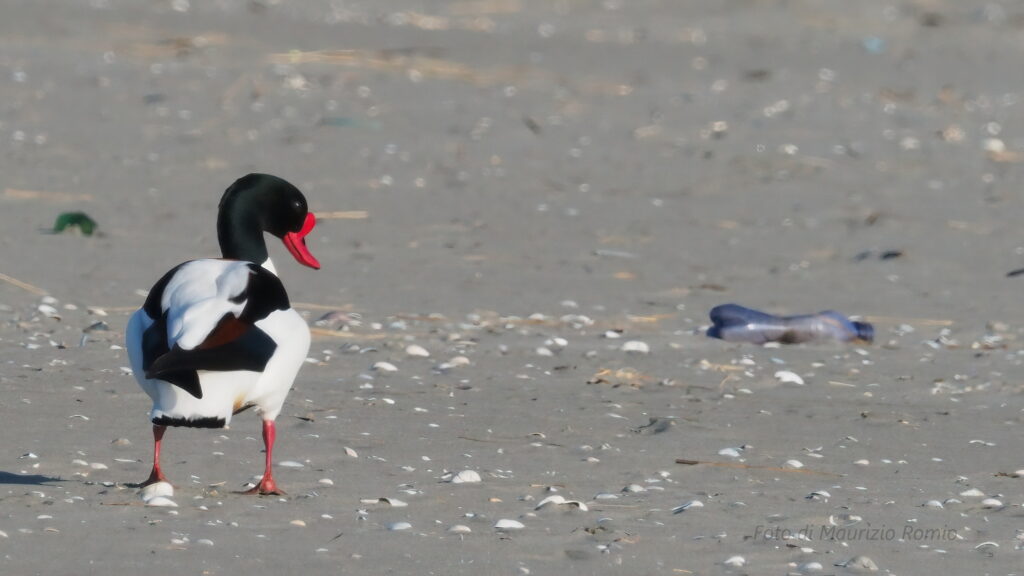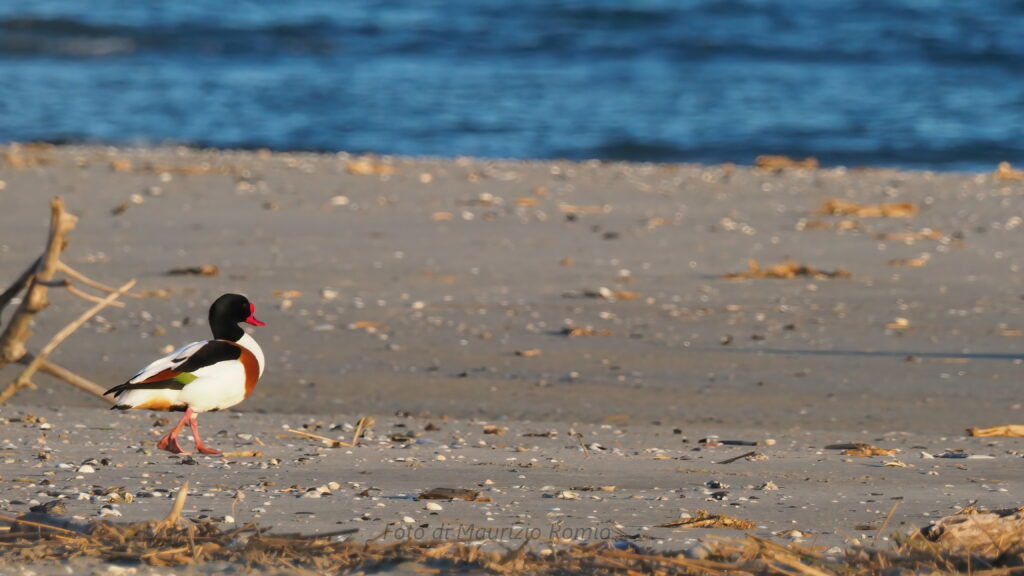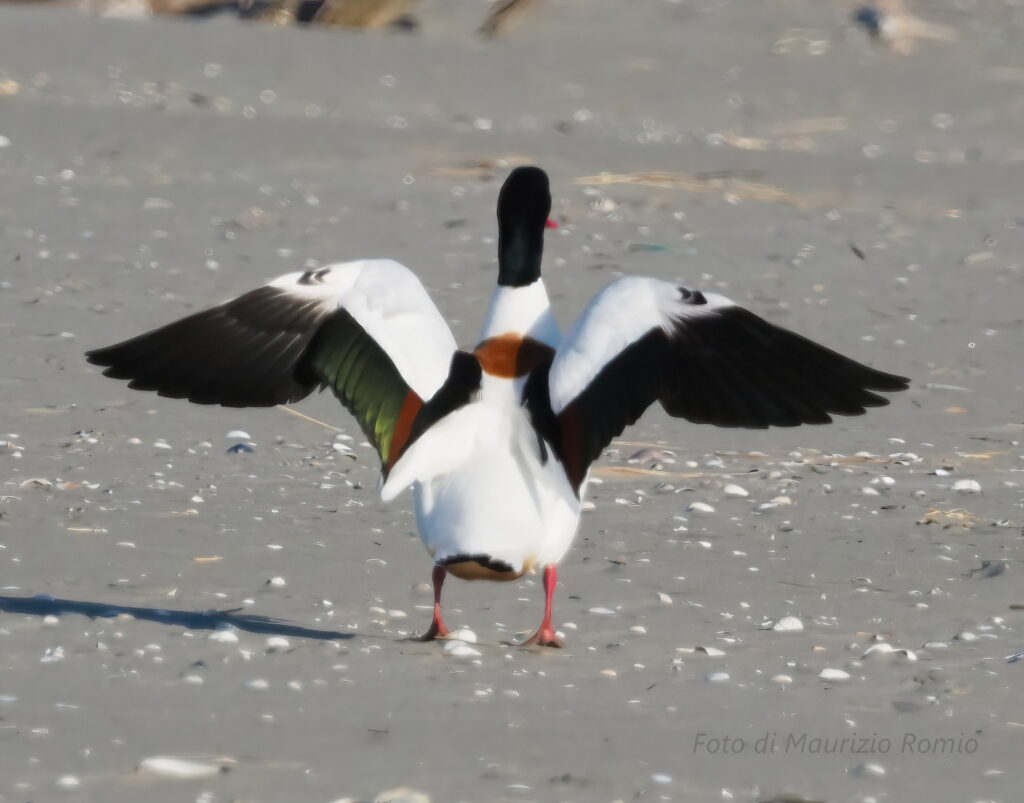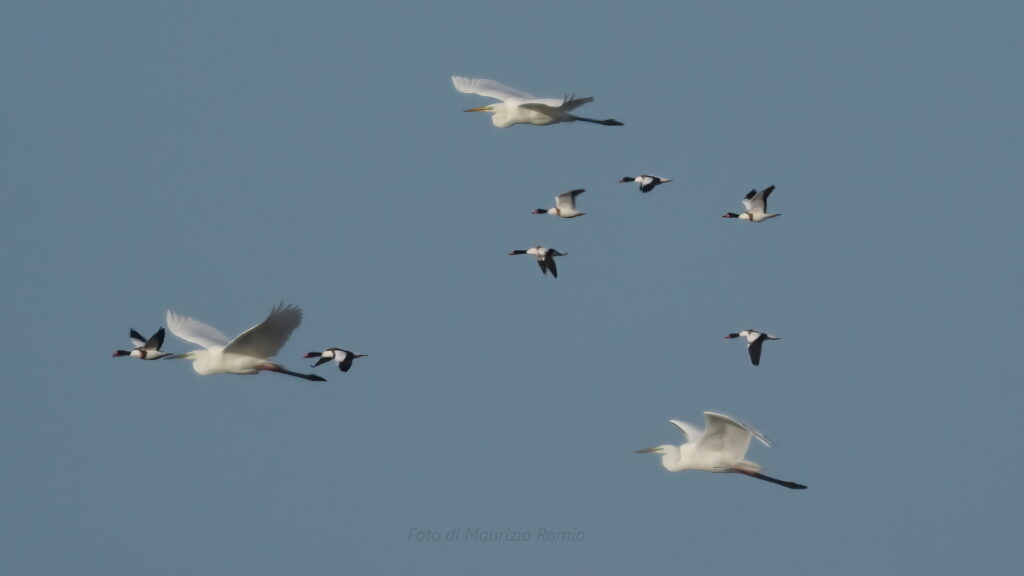Il nome comune di questo uccello, volpoca, composto dai nomi “volpe” e “oca”, volp – oca, deriva dal fatto che questo volatile spesso utilizza, come riparo per la riproduzione, i cunicoli scavati nel terreno dalle volpi o da altri animali. Si distingue facilmente il maschio di volpoca dalla femmina osservando il becco; il maschio ha il becco color rosso e presenta un piccolo rigonfiamento prominente su di esso mentre la femmina presenta un becco color rosa arancio senza la protuberanza caratteristica del becco del maschio.

La volpoca preferisce zone salmastre, costiere e sabbiose. Si ciba principalmente di alghe, crostacei, piccoli pesci, insetti, vermi, lumache acquatiche che cerca immergendo il suo becco nell’acqua o nel terreno fangoso.



Note. Come per il mio precedente articolo del 15 marzo 2023 dal titolo “M Zuiko Digital lens ED 100 400 F5.0 6.3 IS with M Zuiko Digital 2x teleconverter MC-20” per i scatti fotografici ho usato il teleobiettivo Olympus M. Zuiko 100 400 f5.00-6.3 IS collegato al teleconverter M. Zuiko 2X MC-20 allo scopo di capire i vantaggi e i limiti di questo abbinamento.
Shelduck (scientific name Tadorna tadorna)
The common Italian name of this bird, “Volpoca” derives from the fact that it often uses burrows dug in the ground by foxes or other animals as breeding shelter. One can easily distinguish the male shelduck from the female by observing the beak; the male has a red-colored beak and has a small prominent bulge on it while the female has an orange-pink beak without the protuberance characteristic of the male’s beak. The shelduck prefers brackish, coastal and sandy areas. It feeds mainly on algae, crustaceans, small fish, insects, worms, and aquatic snails, which it searches for by dipping its beak into water or muddy soil.
Notes. As in my previous article dated March 15, 2023 titled “M Zuiko Digital lens ED 100 400 F5.0 6.3 IS with M Zuiko Digital 2x teleconverter MC-20” for the photographic shots, I used the Olympus M. Zuiko 100 400 f5.00-6.3 IS telephoto lens connected to the M. Zuiko 2X teleconverter MC-20 for the purpose of understanding the advantages and limitations of this combination.
